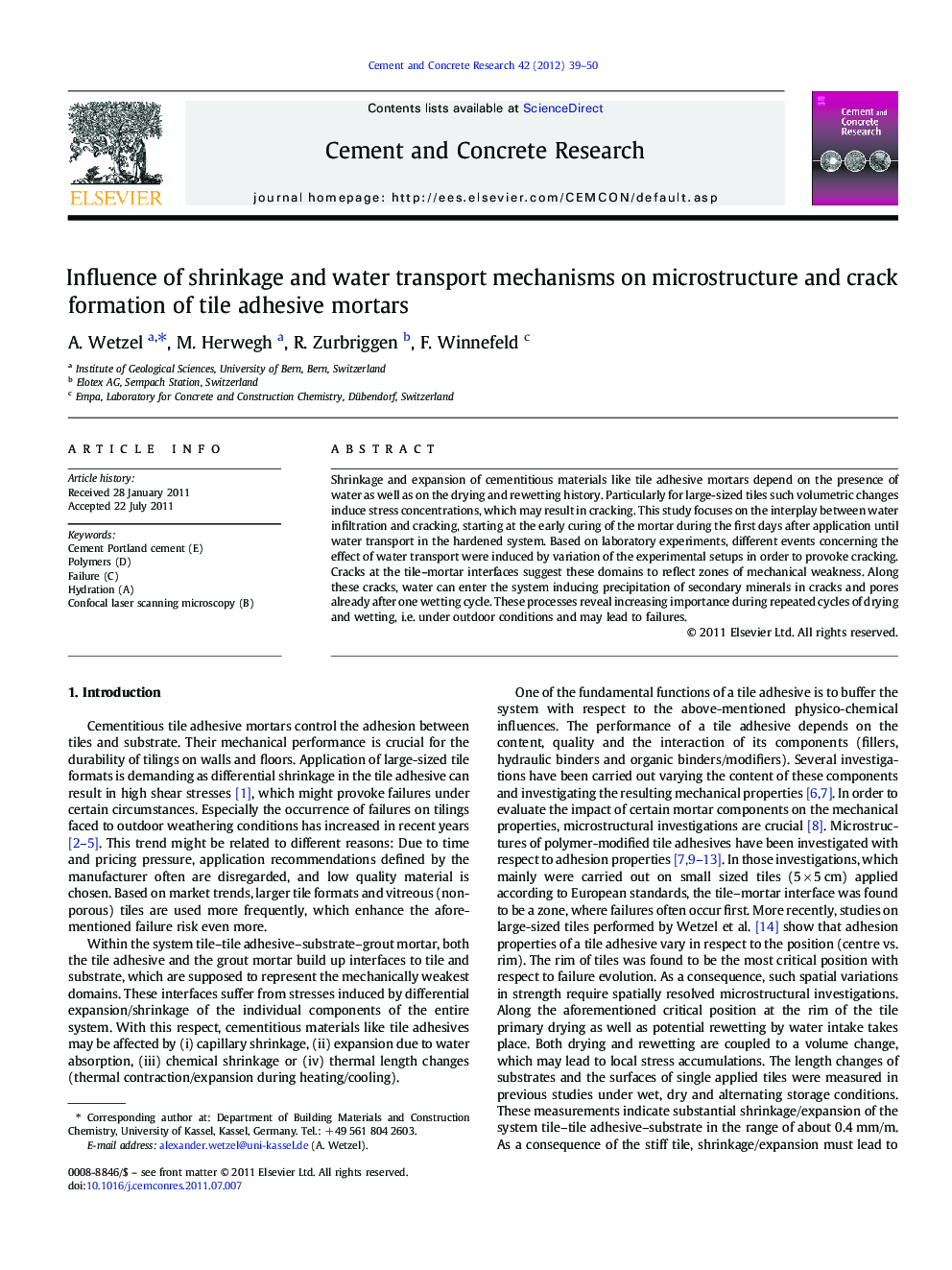| Article ID | Journal | Published Year | Pages | File Type |
|---|---|---|---|---|
| 1456695 | Cement and Concrete Research | 2012 | 12 Pages |
Shrinkage and expansion of cementitious materials like tile adhesive mortars depend on the presence of water as well as on the drying and rewetting history. Particularly for large-sized tiles such volumetric changes induce stress concentrations, which may result in cracking. This study focuses on the interplay between water infiltration and cracking, starting at the early curing of the mortar during the first days after application until water transport in the hardened system. Based on laboratory experiments, different events concerning the effect of water transport were induced by variation of the experimental setups in order to provoke cracking. Cracks at the tile–mortar interfaces suggest these domains to reflect zones of mechanical weakness. Along these cracks, water can enter the system inducing precipitation of secondary minerals in cracks and pores already after one wetting cycle. These processes reveal increasing importance during repeated cycles of drying and wetting, i.e. under outdoor conditions and may lead to failures.
